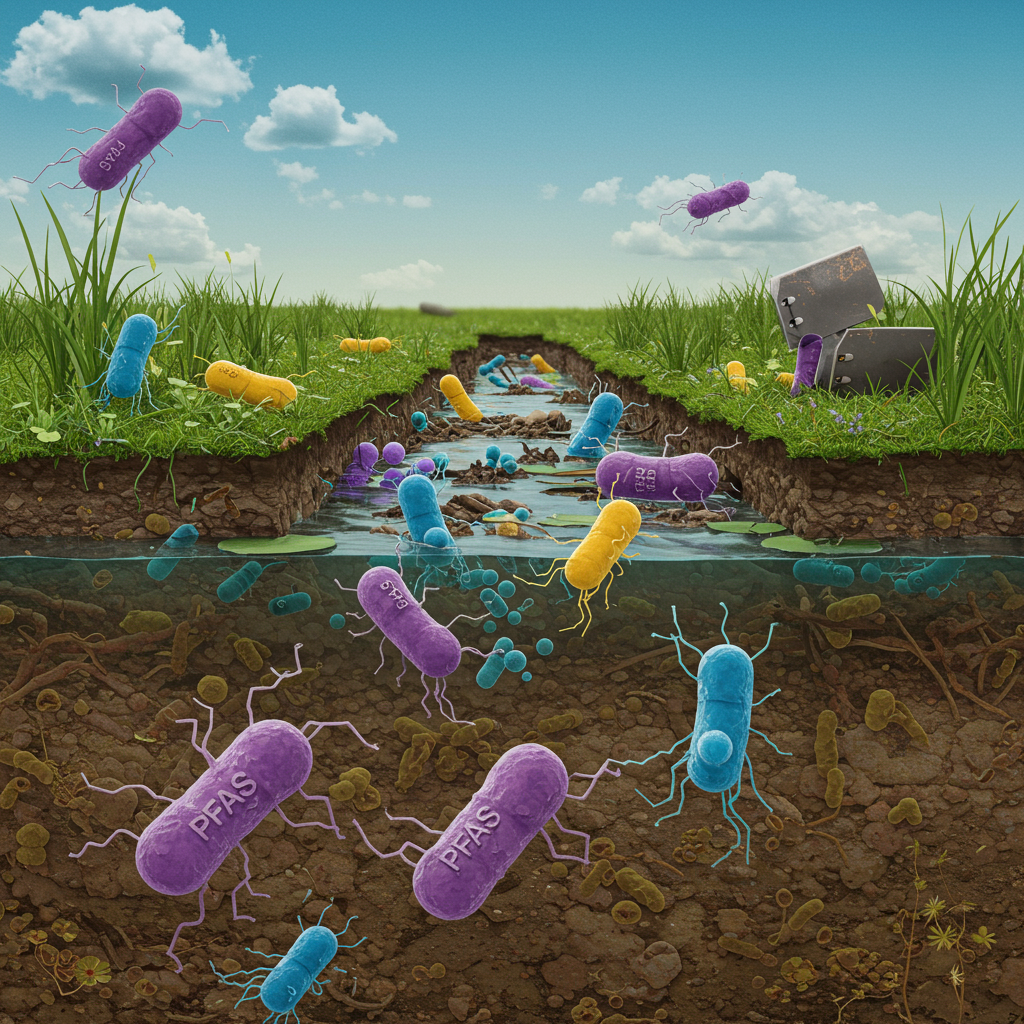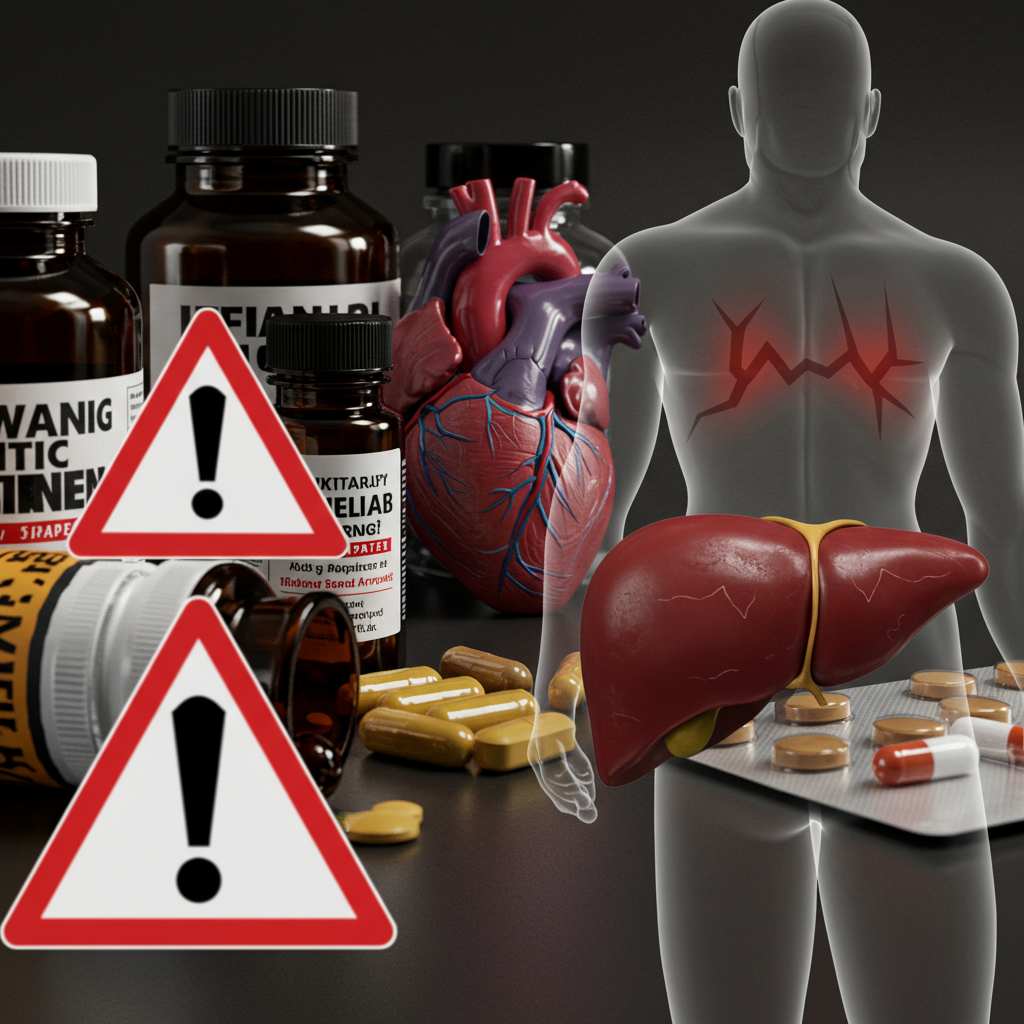SHARE
The global challenge of toxic “forever chemicals” just got a potential game-changer: certain bacteria. Found thriving in polluted environments, these microbes possess a remarkable ability to break down per- and polyfluoroalkyl substances (PFAS), offering a new pathway to combat widespread contamination. This groundbreaking research could revolutionize environmental cleanup efforts and even influence how we address these persistent pollutants in the human body.
The Persistent Problem of Forever Chemicals (PFAS)
Per- and polyfluoroalkyl substances (PFAS) are a large group of synthetic chemicals. They have been manufactured and used since the 1940s. Their unique properties, like resistance to water, oil, heat, and chemicals, make them invaluable in countless products. You find them in nonstick cookware, waterproof clothing, stain-resistant fabrics, food packaging, cosmetics, and firefighting foams.
The issue? These very properties mean PFAS barely break down in nature. This is due to the extremely strong carbon-fluorine bond at their core. They linger in the environment for centuries, earning the nickname “forever chemicals.” This persistence leads to contamination of soil, water, air, and even our food supply. Consequently, PFAS are now detected in the blood of most people in the U.S. and globally. Exposure to PFAS has been linked to various health problems. These include reduced fertility, developmental issues in children, increased cancer risks (like kidney and testicular cancer), decreased immunity, and high cholesterol. Regulators like the U.S. EPA are rapidly revising guidelines, treating some PFAS types with similar urgency to lead.
Italian Scientists Discover PFAS-Degrading Bacteria in Polluted Soil
A recent study offers a glimmer of hope in the fight against PFAS. Researchers at Catholic University in Piacenza, Italy, working with the University of Padua, investigated soil heavily contaminated with PFAS in the Veneto region. This area, particularly the provinces of Vicenza and Padua, shows high PFAS levels. The contamination is likely due to local industrial activity. Soil and groundwater here contain PFAS concentrations exceeding 1,000 nanograms per liter.
The scientists aimed to isolate and identify microorganisms capable of degrading these stubborn chemicals. They collected soil samples from these highly contaminated sites in northern Italy. The team used a two-pronged approach. First, classical microbiology techniques helped them isolate individual bacterial strains. Second, they used DNA metabarcoding. This molecular technique rapidly identifies species present in an environmental sample. It also provides clues about their potential for bioremediation.
Training Microbes to Eat Toxic Waste
A crucial step in finding the effective bacteria was an “enrichment” process. Professor Edoardo Puglisi, who led the research at Catholic University, explained this technique. They grew bacteria from the soil samples in laboratory media. The only source of carbon and energy provided was PFAS. This process effectively selected for the microbes that could survive and thrive by consuming the forever chemicals.
Through this method, the researchers isolated nearly 20 different bacterial species. These “PFAS-eating” bacteria were classified within genera already known in bioremediation science. Notable examples include Micrococcus, Rhodanobacter, Pseudoxanthomonas, and Achromobacter. The study has already obtained the complete genomes for these promising strains. They also have initial data on their individual degradation rates.
Promising Degradation Rates in the Lab
Working with their chemistry colleagues, the team measured the efficiency of these bacteria in breaking down PFAS compounds in controlled lab tests. Professor Puglisi reported that the degradation efficiency reached “above 30%” in some cases. He described this rate as “very high for this class of compounds,” given their extreme stability.
Tests are currently ongoing with various types of PFAS molecules. Initial lab experiments are planned to verify their remediation capabilities. These future tests will use conditions more representative of real-world environments. The potential for using these naturally occurring, non-harmful bacteria for environmental cleanup is significant. Furthermore, analyzing their genomes could reveal specific genes involved in breaking down the carbon-fluorine bond. This discovery could open doors for future biotechnological applications. The findings were presented at the 35th annual SETAC Europe conference in Vienna in May 2025.
Bacteria Battling PFAS: Different Approaches
Interestingly, research isn’t confined to just environmental cleanup. Other scientific teams are exploring different ways bacteria might help tackle the PFAS problem. One notable study from the University of Cambridge focused on healthy bacteria within the human gut.
This research, published in Nature Microbiology, found that certain gut microbes can “soak up” or absorb PFAS. The study involved testing human gut bacteria strains in lab mice. Mice carrying these specific bacteria excreted significantly more PFAS in their stool. One bacterium, Odoribacter splanchnicus, showed remarkable efficiency. It reduced exposure to certain PFAS types by 25% to 74% in 24 hours by binding to the chemicals. This suggests these beneficial bacteria could help remove PFAS from the body via excretion. Scientists are now exploring the possibility of developing probiotic supplements. Such supplements could potentially increase levels of these helpful bacteria in the body. This might offer a way to mitigate the health impacts of unavoidable PFAS exposure.
Beyond Absorption: Breaking the Bond with Specific Strains
Another distinct environmental approach comes from researchers at the University at Buffalo. They identified a specific bacterium, Labrys portucalensis F11, capable of breaking down PFAS. This strain was found in a polluted industrial site in Portugal. It seems to have adapted to use contaminants as a food source.
Lab experiments showed Labrys portucalensis F11 can directly metabolize PFAS. It actively breaks the strong carbon-fluorine bonds. In tests, it degraded over 90% of one tough PFAS type, PFOS, within 100 days. Crucially, it also processed some of the toxic byproducts created during the initial breakdown. While promising, this bacterial breakdown process is relatively slow. Its efficiency might also decrease in real-world settings with other food sources available. Future research will explore adding minimal alternative food to encourage growth without losing the incentive to eat PFAS. The potential application lies in integrating such bacteria into wastewater treatment or using them for in situ cleanup.
The Role of Chemistry: A Different Attack Plan
It’s also important to note that biological methods aren’t the only scientific frontier. Chemists are also finding ways to destroy forever chemicals. Northwestern University chemists developed a simple, low-temperature chemical method. Their approach targets the vulnerable “head group” of the PFAS molecule.
By heating PFAS compounds in a specific solvent with a common reagent (sodium hydroxide), they can destabilize the molecule. This triggers a reaction that breaks the tough carbon-fluorine bonds. The fluorine atoms are released as harmless fluoride ions. This method works under milder conditions (lower heat) than traditional destruction methods like high-temperature incineration. It successfully degraded several major PFAS types, including PFOA and GenX. This chemical approach offers a non-biological alternative. It highlights the diverse strategies researchers are pursuing to eliminate forever chemicals permanently.
Challenges and the Future of PFAS Solutions
While these discoveries are incredibly exciting, they represent steps in an ongoing journey. Scaling up lab results to real-world environmental or biological systems presents challenges. Factors like temperature, pH, the presence of other chemicals, and the sheer diversity of PFAS types (over 12,000 exist) must be addressed. The speed of bacterial degradation is also a current limitation for some methods.
However, these findings offer significant hope. The Italian study shows bacteria naturally present in contaminated soil can evolve to break down PFAS. The Cambridge study suggests microbes in our gut might help our bodies excrete them. The Buffalo research highlights specific powerful strains. The Northwestern work demonstrates effective chemical destruction. Combining these biological and chemical strategies, tailoring them to specific contamination scenarios, and overcoming scaling hurdles will be key to developing practical, sustainable solutions for the forever chemical crisis. This multidisciplinary effort is crucial for protecting both environmental and human health.
Frequently Asked Questions
What are PFAS-eating bacteria, and how do they break down “forever chemicals”?
PFAS-eating bacteria are specific microbes, often found in contaminated soil, that have evolved the ability to use per- and polyfluoroalkyl substances (PFAS) as a food source. They do this by breaking the incredibly strong carbon-fluorine bonds within the PFAS molecules. This process allows them to access the carbon atoms for energy and growth, effectively degrading the toxic chemicals into less harmful substances. Studies from Italy have isolated around 20 species showing this capability.
Where were these specific PFAS-eating bacteria found, and which institutions are researching them?
The initial discovery of the ~20 PFAS-degrading bacterial species highlighted in this article occurred in heavily contaminated soil in the Veneto region of northern Italy, specifically in the provinces of Vicenza and Padua. The research was conducted by a team from Catholic University in Piacenza, in collaboration with the University of Padua. Other relevant research mentioned includes studies by the University of Cambridge (gut bacteria absorbing PFAS) and the University at Buffalo (specific strain Labrys portucalensis F11 degrading PFAS from Portugal).
Can these bacteria truly solve the global PFAS pollution problem right now?
While these bacterial discoveries are extremely promising, they are not yet a complete solution. Current research shows significant degradation rates (like >30% in Italian studies or >90% for specific strains in Buffalo research) in controlled laboratory settings. However, scaling these processes for widespread environmental cleanup is complex. Challenges include the speed of degradation, maintaining efficiency in diverse real-world conditions with competing food sources, and addressing the vast array of PFAS types. Further research and development are needed before these bacteria can be deployed broadly for full-scale remediation.




